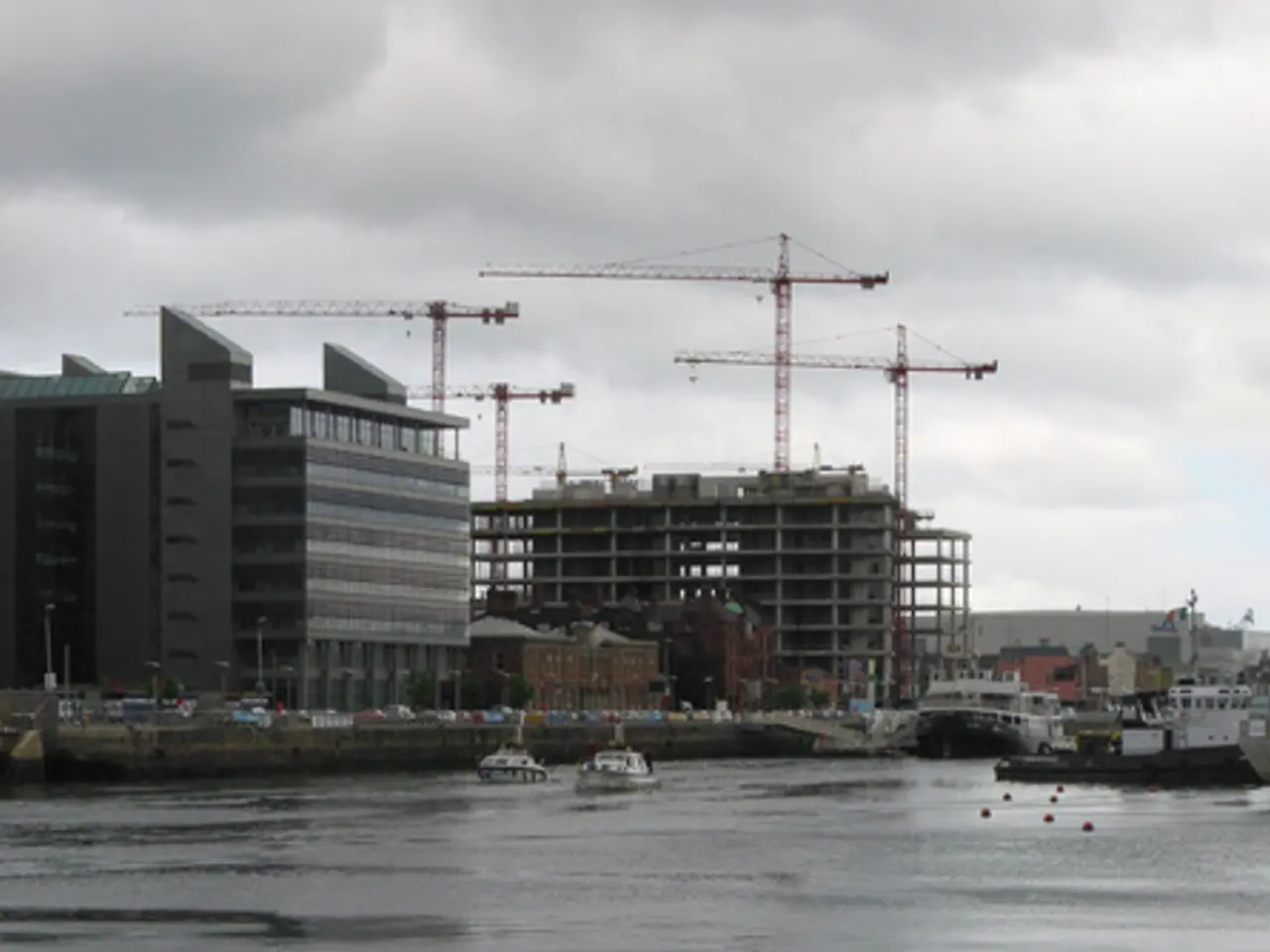Advancement of Nuevo Laredo's III World Trade Bridge construction project reaches 90% completion
The Nuevo Laredo III World Trade Bridge, a vital link connecting Mexico, the United States, and Canada, is undergoing a significant expansion to accommodate the increasing trade volumes expected in the coming years.
The expansion primarily focuses on doubling the bridge's capacity from eight to sixteen lanes and adding a fifth international bridge in the Laredo-Nuevo Laredo border area. This initiative is driven by projections that the current bridge will reach capacity by around 2030 without intervention.
Key details and timeline:
- Expansion Scope: Widening the existing World Trade Bridge from 8 to 16 lanes is a major part of the ongoing expansion plans, along with further projects to increase commercial crossing capacity.
- Capacity Concerns: Experts and trade officials note congestion issues and capacity limits are already being felt, prompting urgency in bridging upgrades and complementary crossings like the Colombia-Solidarity Bridge.
- Complementary Projects: The bridge upgrade involves technology enhancements such as the FAST Lane commercial clearance program and weigh-in-motion technology for smoother throughput.
- Timeline: A federal permit for doubling the capacity was issued in 2024, marking a regulatory milestone for construction and expansion efforts. Some related infrastructure, including a new bridge related to freight, was reportedly scheduled for completion in early 2025, effectively doubling freight movement capacity between Laredo and Nuevo Laredo.
- Broader Context: These bridge expansions tie into larger trade facilitation and nearshoring strategies in the region, including new industrial parks and logistics hubs designed to support increased cross-border commerce.
While specific final completion dates for the full concession expansion are not explicitly stated, given permitting milestones and ongoing infrastructure projects in early 2025, the expansion program is actively underway, targeting capacity needs through 2030 and beyond.
The SICT has issued instructions to authorize the concession expansion, and the Secretary of Public Works of Tamaulipas, Pedro Cepeda Anaya, reported a 90% progress on the project. The "Second Modification and Restatement of the Concession Title" will be submitted, allowing progress on the executive expansion project and its construction. The federal government has shown its willingness to authorise the concession for an additional 30 years.
The Nuevo Laredo III World Trade Bridge currently has eight lanes, with two more lanes to be added, and an additional body to be built, bringing the total to 18 lanes. This expansion consolidates Tamaulipas as the most important strategic hub for foreign trade, connecting Mexico, the United States, and Canada. The State Government has been working on technical and legal efforts to ensure the operational continuity and modernization of this key infrastructure for international trade.
- The expansion of the Nuevo Laredo III World Trade Bridge involves not only widening the existing bridge to 16 lanes but also adding new lanes and constructing an additional body, which will transform the bridge into a 18-lane facility, a significant step in the business and finance sector, as it aims to accommodate increasing trade volumes.
- In the broader context, the expansion of the Nuevo Laredo III World Trade Bridge is part of a long-term strategy, which includes the construction of new industrial parks and logistics hubs, to facilitate nearshoring and bolster cross-border commerce within the industry, especially between Mexico, the United States, and Canada.




